An Experimental Investigation of the Mechanical Performance of EPS Foam Core Sandwich Composites Used in Surfboard Design
Abstract
1. Introduction
2. Materials and Methods
2.1. Flexural Testing
2.2. Fracture Toughness Testing
2.3. Iosipescu (V-Notch Shear) Testing
2.4. Tensile Testing
3. Results and Discussion
3.1. Flexure Results
3.2. Shear and Fracture Experiments

3.3. Tensile Experiments
4. Conclusions
- Ten different EPS core sandwich composites were manufactured via a vacuum bagging process. This process produced panels with highly consistent resin content for identical fabrics, for a low tooling cost.
- EPS foam density had the most significant influence on the flexural and fracture properties, where higher-density foam increased all but one metric across identical fabrics. It was also observed that there is less influence from the core density in the shear and tensile properties.
- The standard surfboard composite of a single layer of plain weave E-glass (1EG) was consistently one of the lowest composites for all the mechanical performance indicators. On the contrary, the mechanical properties of the plain weave carbon fibre (90CF) composite were frequently the highest of the fabric reinforcements measured. This construction is expected to be more suited for responsive boards for powerful surfing or surfing in dangerous conditions, where board durability is key.
- Microscopic analysis identified sudden brittle failure across the E-glass and carbon facings. However, PET facing observed severe plastic deformation and delamination, owing to its high resin content. The double-bias carbon facing (45CF) shear failure patterns were deemed unacceptable as there was evidence of core creasing due to Iosipescu fixture.
- The current standard material construction (H-1EG) was seen to have a stiffness of 0.84 ± 0.06 MPa. The results indicated surfboard manufacturers can utilise the M-45CF composite to obtain a similar board flex profile of 0.90 ± 0.04 MPa while improving the durability of the equipment, as the M-45CF composite increases the critical damage properties of flexural strength (+17%), material toughness (+107%), and fracture toughness (+156%), with only tensile strength decreasing (−57%). Shear toughness is not assessable; however, due to observed failure patterns, it is likely to be improved by the carbon composite.
Supplementary Materials
Author Contributions
Funding
Institutional Review Board Statement
Data Availability Statement
Acknowledgments
Conflicts of Interest
References
- Birman, V.; Kardomateas, G.A. Review of current trends in research and applications of sandwich structures. Compos. Part B Eng. 2018, 142, 221–240. [Google Scholar] [CrossRef]
- Vijaya Ramnath, B.; Alagarraja, K.; Elanchezhian, C. Review on Sandwich Composite and their Applications. Mater. Today Proc. 2019, 16, 859–864. [Google Scholar] [CrossRef]
- Xiong, J.; Du, Y.; Mousanezhad, D.; Eydani Asl, M.; Norato, J.; Vaziri, A. Sandwich Structures with Prismatic and Foam Cores: A Review. Adv. Eng. Mater. 2019, 21, 1800036. [Google Scholar] [CrossRef]
- Khan, T.; Acar, V.; Aydin, M.R.; Hülagü, B.; Akbulut, H.; Seydibeyoğlu, M.Ö. A review on recent advances in sandwich structures based on polyurethane foam cores. Polym. Compos. 2020, 41, 2355–2400. [Google Scholar] [CrossRef]
- Sarfraz, M.S.; Hong, H.; Kim, S.S. Recent developments in the manufacturing technologies of composite components and their cost-effectiveness in the automotive industry: A review study. Compos. Struct. 2021, 266, 113864. [Google Scholar] [CrossRef]
- Rajak, D.K.; Pagar, D.D.; Menezes, P.L.; Linul, E. Fiber-Reinforced Polymer Composites: Manufacturing, Properties, and Applications. Polymers 2019, 11, 1667. [Google Scholar] [CrossRef]
- Vinson, J.R. Sandwich structures: Past, present, and future. Sandw. Struct. 2005, 7, 3–12. [Google Scholar]
- Zhang, J.; Chevali, V.S.; Wang, H.; Wang, C.-H. Current status of carbon fibre and carbon fibre composites recycling. Compos. Part B Eng. 2020, 193, 108053. [Google Scholar] [CrossRef]
- Stolk, M. Towards Circular Bicycle Development: Introducing a Tool for Progression towards a Circular Bicycle Development Process. Master’s Thesis, Delft University of Technology, Delft, The Netherlands, 2020. [Google Scholar]
- Schmidt, C.W. Putting the Earth in Play: Environmental Awareness and Sports. Environ. Health Perspect. 2006, 114, A286–A295. [Google Scholar] [CrossRef]
- Collotta, M.; Solazzi, L.; Pandini, S.; Tomasoni, G. New design concept of a downhill mountain bike frame made of a natural composite material. Proc. Inst. Mech. Eng. Part P J. Sport. Eng. Technol. 2018, 232, 50–56. [Google Scholar] [CrossRef]
- Walsh, J.M.; Singh, G. An eco-efficiency analysis of the snowboard manufacturing industry. Int. J. Sustain. Soc. 2009, 1, 364–382. [Google Scholar] [CrossRef]
- Dicker, M.P.M.; Duckworth, P.F.; Baker, A.B.; Francois, G.; Hazzard, M.K.; Weaver, P.M. Green composites: A review of material attributes and complementary applications. Compos. Part A Appl. Sci. Manuf. 2014, 56, 280–289. [Google Scholar] [CrossRef]
- Romanin, A.; English, S.; Furness, J.; Kemp-Smith, K.; Newcomer, S.; Nessler, J. Surfing equipment and design: A scoping review. Sport. Eng. 2021, 24, 21. [Google Scholar] [CrossRef]
- GVR-3-68038-671-4; Surfing Equipment Market Size, Share & Trends Analysis Report by Product, by Distribution Channel, by Region, and Segment Forecasts, 2021–2028. Grand View Research: San Francisco, CA, USA, 2020.
- Russo, A.; Zuccarello, B. Experimental and numerical evaluation of the mechanical behaviour of GFRP sandwich panels. Compos. Struct. 2007, 81, 575–586. [Google Scholar] [CrossRef]
- Vinson, J.R. The Behavior of Sandwich Structures of Isotropic and Composite Materials, 1st ed.; Routledge: New York, NY, USA, 2017; p. 378. [Google Scholar] [CrossRef]
- Gibson, C.; Warren, A. Making Surfboards: Emergence of a Trans-Pacific Cultural Industry. J. Pac. Hist. 2014, 49, 1–25. [Google Scholar] [CrossRef]
- Manning, J.; Crosky, A.; Bandyopadhyay, S. Flexural and impact properties of sandwich panels used in surfboard construction. In Proceedings of the International Conference on Advanced Composite Materials, Wollongong, Australia, 15–19 February 1993; The Minerals, Metals and Materials Society: Warrendale, PA, USA, 1993. [Google Scholar]
- Johnstone, J.M. Flexural testing of sustainable and alternative materials for surfboard construction, in comparison to current industry standard materials. Plymouth Stud. Sci. 2011, 4, 109–142. [Google Scholar]
- Schultz, T.C. The Surfboard Cradle-to-Grave; University of California: Berkely, CA, USA, 2009; p. 26. [Google Scholar]
- Gibson, C.; Warren, A. Surfboard making and environmental sustainability: New materials and regulations, subcultural norms and economic constraints. In Sustainable Surfing; Borne, G., Ponting, J., Eds.; Routledge: London, UK, 2017; Volume 1, pp. 87–103. [Google Scholar]
- Michelena, A.H.; Graham-Jones, J.; Summerscales, J.; Hall, W. Eco-friendly Flax Fibre/Epoxy Resin/Composite System for Surfboard Production. In Natural Fibres: Advances in Science and Technology Towards Industrial Applications; Fangueiro, R., Rana, S., Eds.; Springer: Dordrecht, The Netherlands, 2016; Volume 12, pp. 267–277. [Google Scholar]
- Correia, J.M.D.; Serra, G.F.; Alves de Sousa, R.J.; Pereira, A.B.; Fernandes, F.A.O. Expanded (Black) Cork for the Development of an Eco-Friendly Surfboard: Environmental Impact and Mechanical Properties. Sustainability 2022, 14, 668. [Google Scholar] [CrossRef]
- Torres, J.P.; Hoto, R.; Andrés, J.; García-Manrique, J.A. Manufacture of Green-Composite Sandwich Structures with Basalt Fiber and Bioepoxy Resin. Adv. Mater. Sci. Eng. 2013, 2013, 214506. [Google Scholar] [CrossRef]
- McCagh, S. The Surfboard Book: How Design Drives Performance; McCagh O’Neill Pty Ltd.: Gold Coast, Australia, 2013. [Google Scholar]
- Oggiano, L.; Panhuis, M.i.h. Modern Surfboards and Their Structural Characterization: Towards an Engineering Approach. In Proceedings of the 13th Conference of the International Sports Engineering Association, Online, 22–26 June 2020. [Google Scholar]
- Crameri, S.; Stojcevski, F.; Usma-Mansfield, C. Effect of Fabric Reinforcement on the Flexural Properties of EPS-Core Surfboard Constructions. In Proceedings of the ISEA 2022—Engineering of Sport: Proceedings of the 14th Bi-Annual International Conference of the International Sports Engineering Association, West Lafayette, IN, USA, 6–10 June 2022. [Google Scholar]
- Abdurohman, K.; Satrio, T.; Muzayadah, N.L.; Teten. A comparison process between hand lay-up, vacuum infusion and vacuum bagging method toward e-glass EW 185/lycal composites. J. Phys. Conf. Ser. 2018, 1130, 012018. [Google Scholar] [CrossRef]
- Sałasińska, K.; Cabulis, P.; Kirpluks, M.; Kovalovs, A.; Kozikowski, P.; Barczewski, M.; Celiński, M.; Mizera, K.; Gałecka, M.; Skukis, E.; et al. The Effect of Manufacture Process on Mechanical Properties and Burning Behavior of Epoxy-Based Hybrid Composites. Materials 2022, 15, 301. [Google Scholar] [CrossRef] [PubMed]
- Talabari, A.A.; Alaei, M.H.; Shalian, H.R. Experimental Investigation of Tensile Properties in a Glass/Epoxy Sample Manufactured by Vacuum Infusion, Vacuum Bag and Hand Layup Process. Rev. Compos. Matériaux Av. 2019, 29, 179–182. [Google Scholar] [CrossRef]
- Daniel, I.M.; Gdoutos, E.E.; Wang, K.A.; Abot, J.L. Failure Modes of Composite Sandwich Beams. Int. J. Damage Mech. 2002, 11, 309–334. [Google Scholar] [CrossRef]
- Borne, G.; Ponting, J. Sustainable Surfing; Routledge: Abingdon, UK, 2017. [Google Scholar]
- Bilisik, K. Multiaxis 3D Woven Preform and Properties of Multiaxis 3D Woven and 3D Orthogonal Woven Carbon/Epoxy Composites. J. Reinf. Plast. Compos. 2010, 29, 1173–1186. [Google Scholar] [CrossRef]
- Stojcevski, F.; Hilditch, T.; Henderson, L.C. A modern account of Iosipescu testing. Compos. Part A Appl. Sci. Manuf. 2018, 107, 545–554. [Google Scholar] [CrossRef]
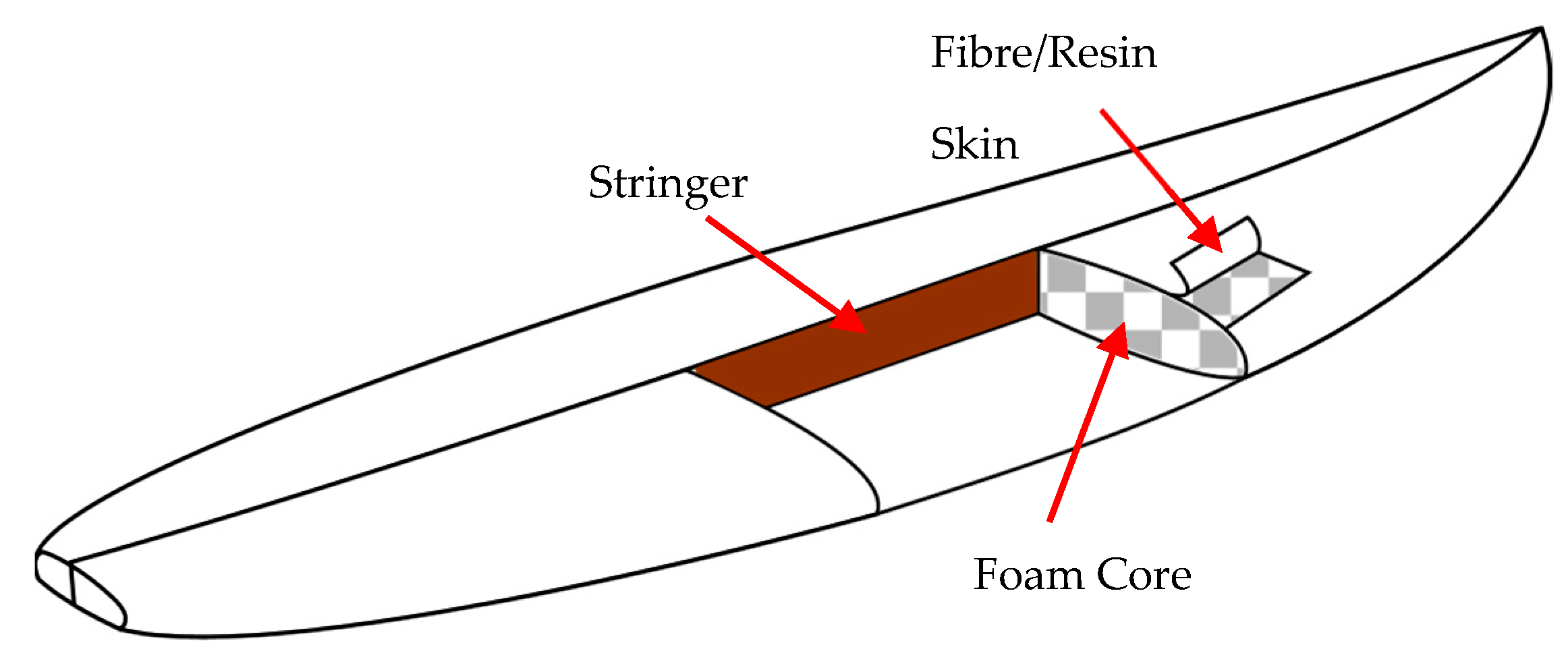
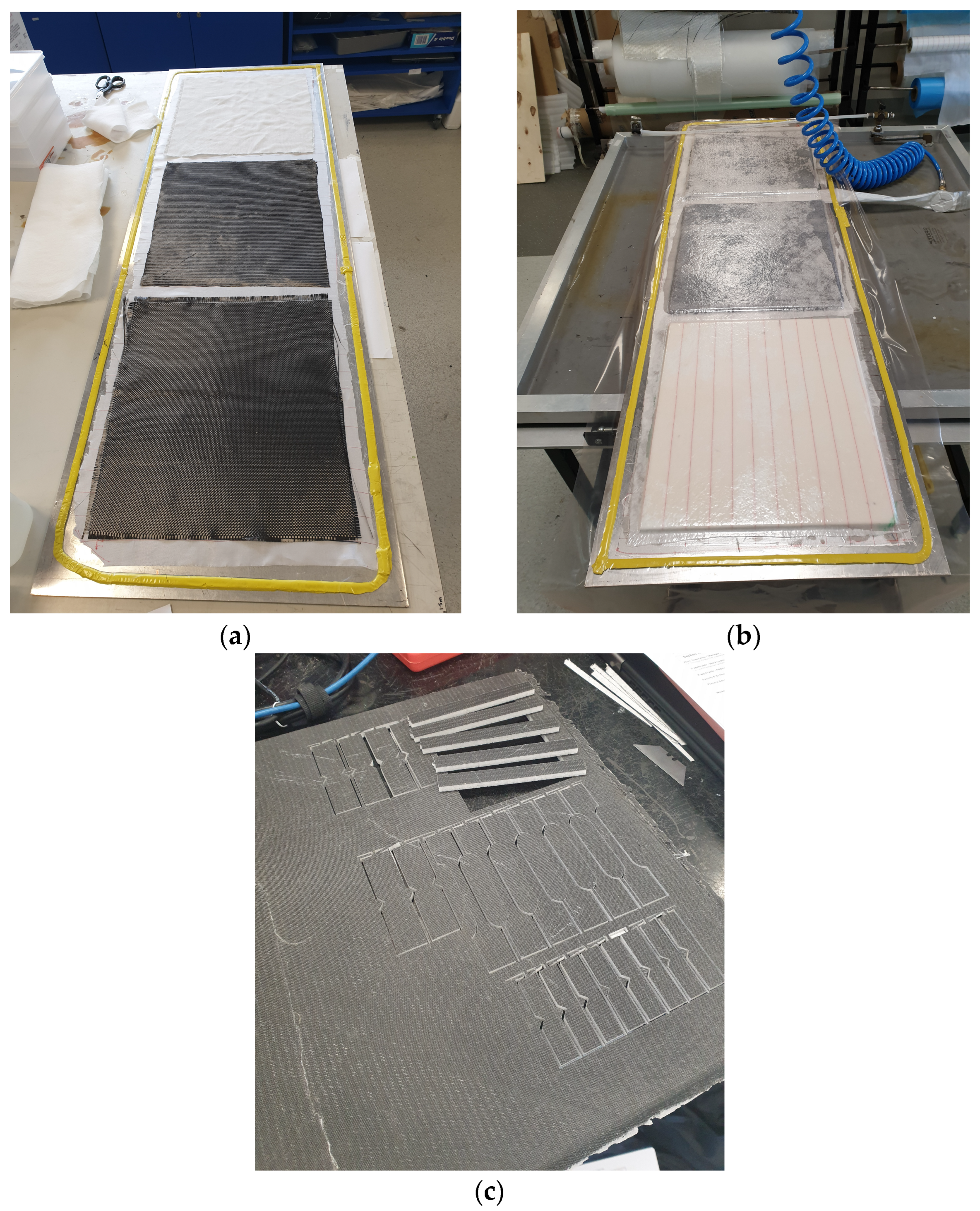
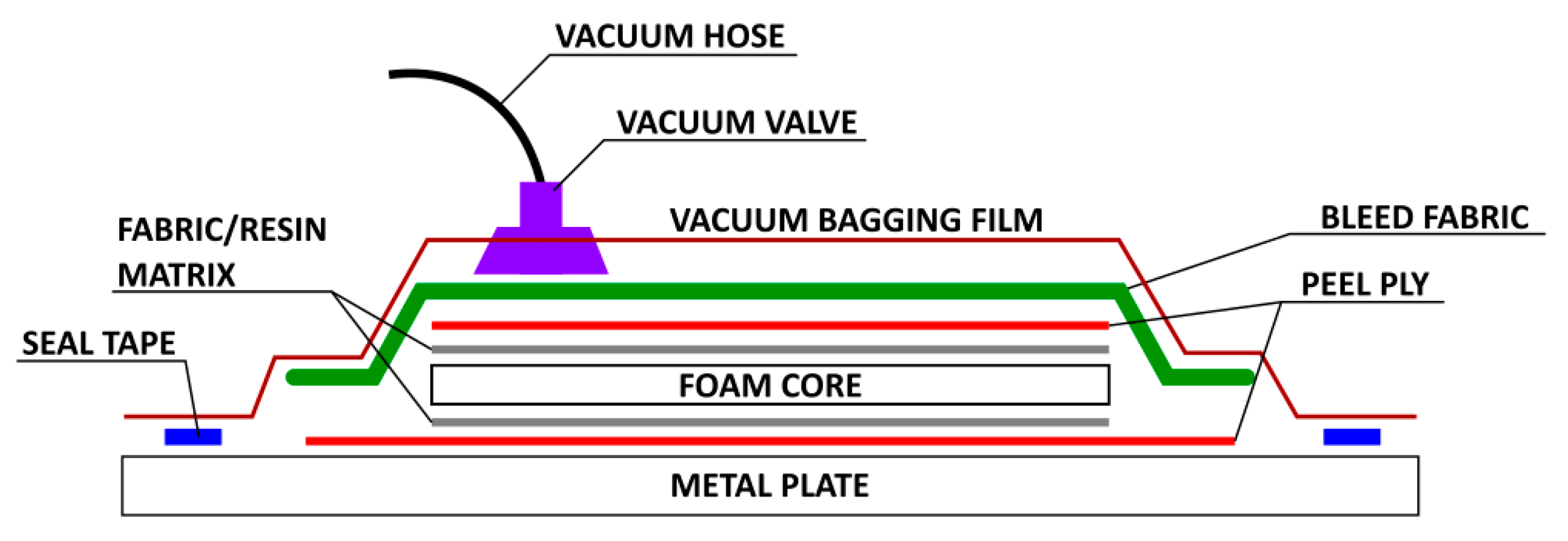


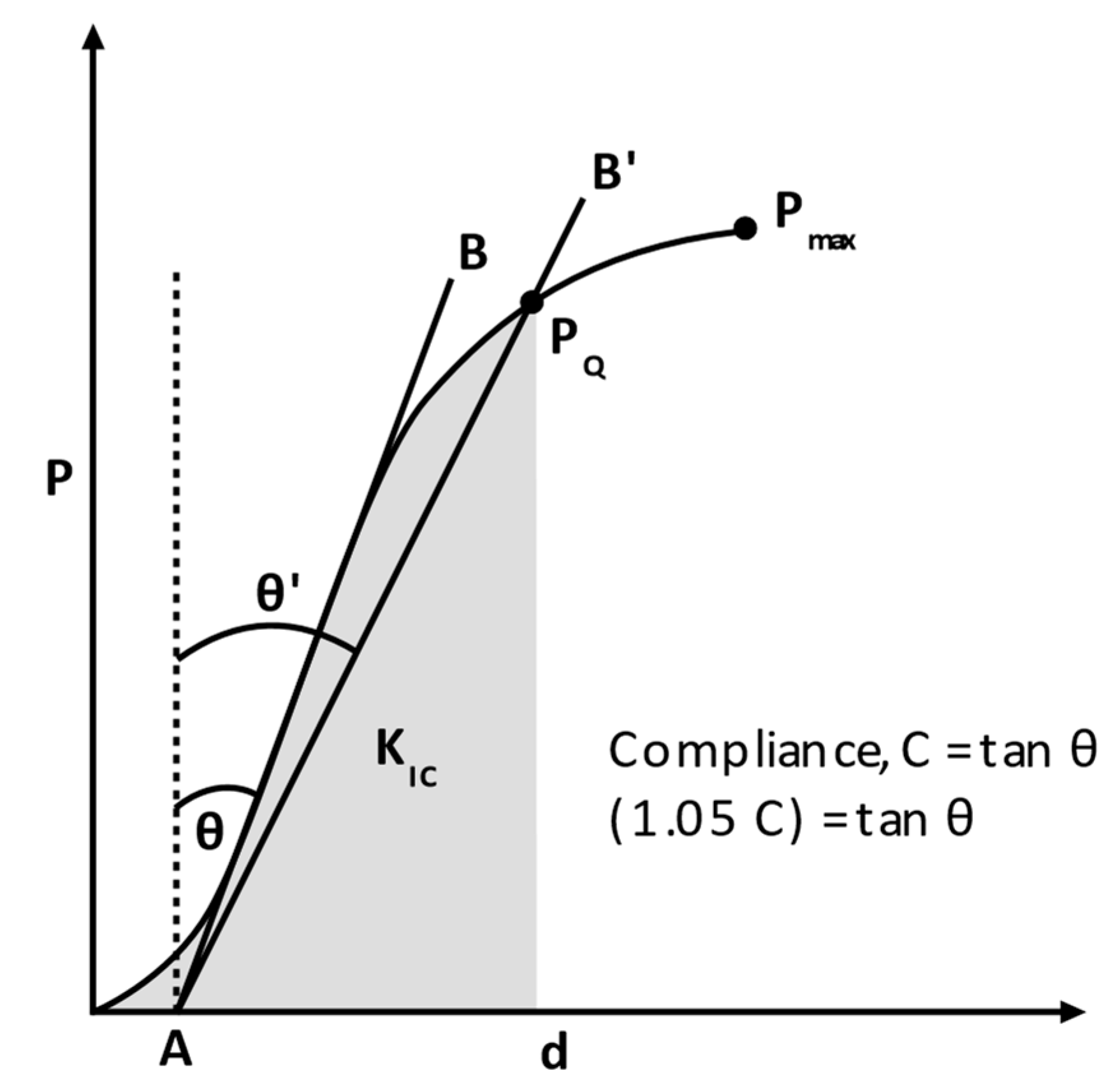
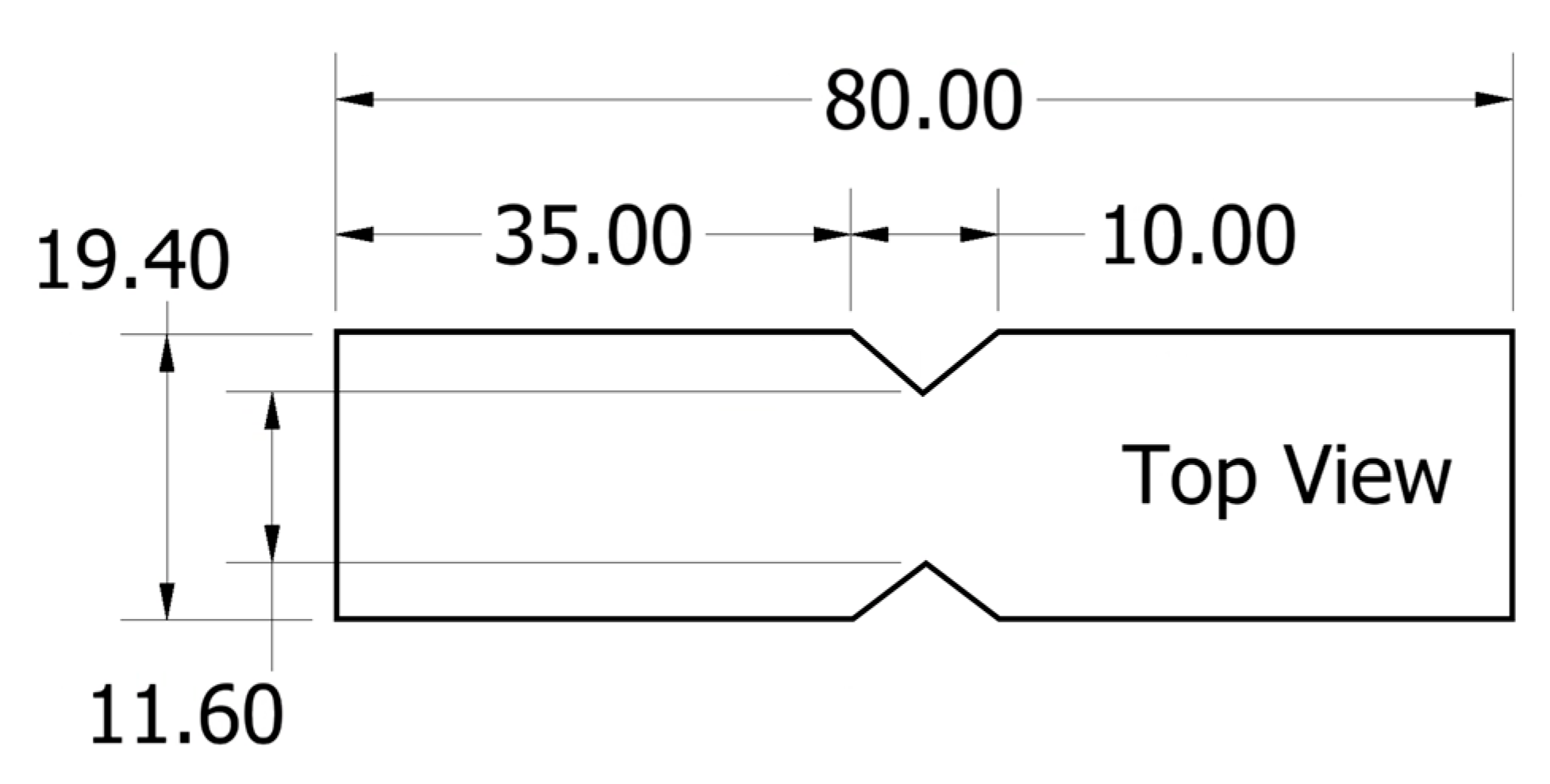
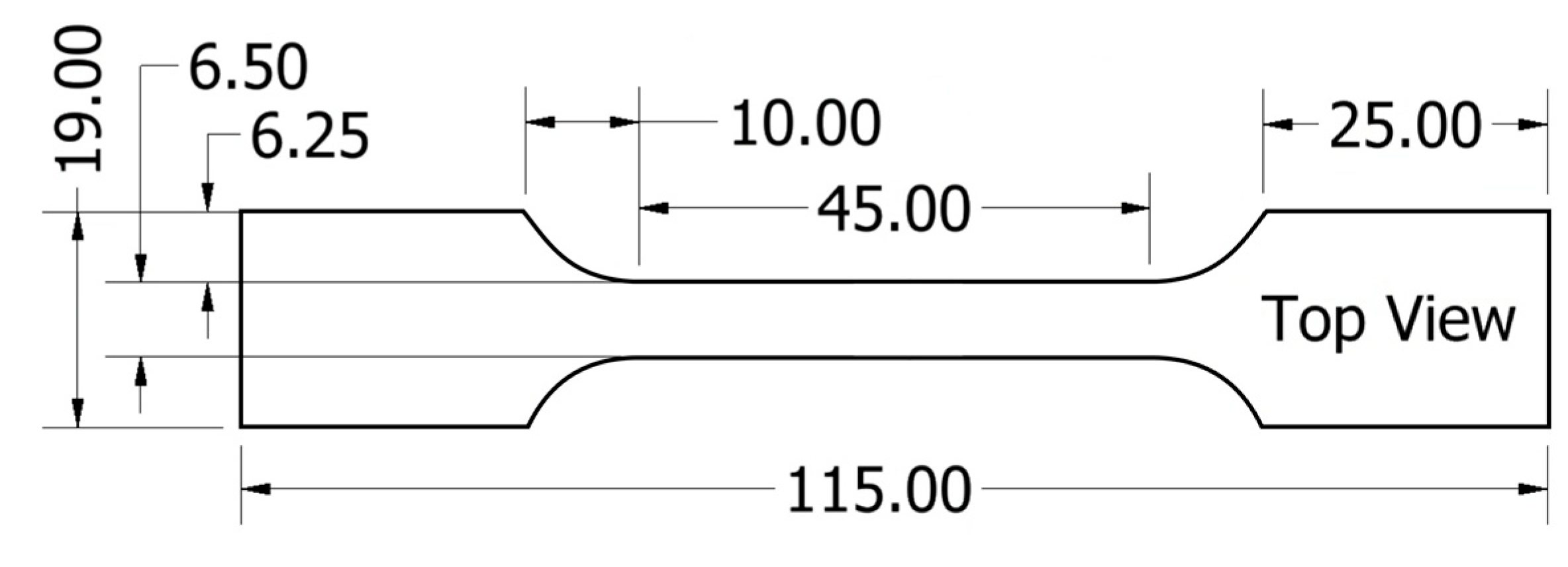


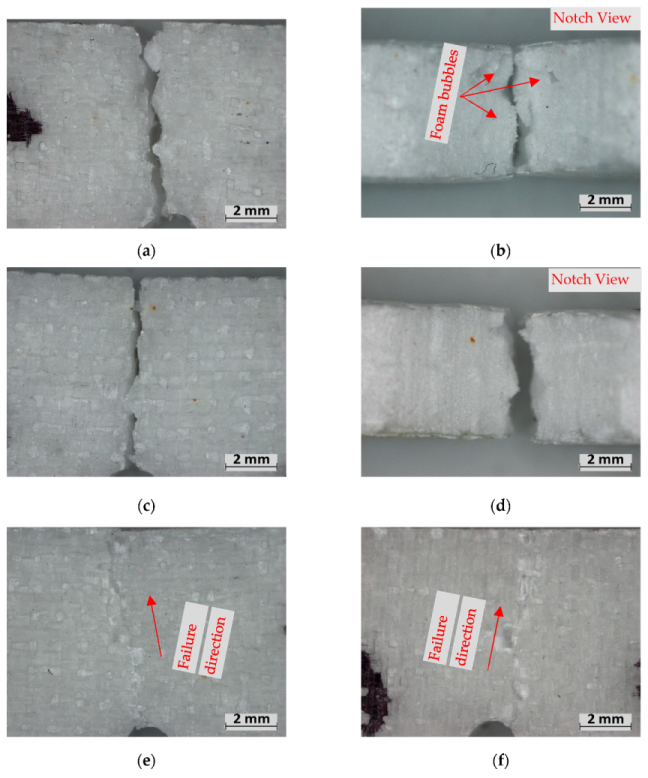
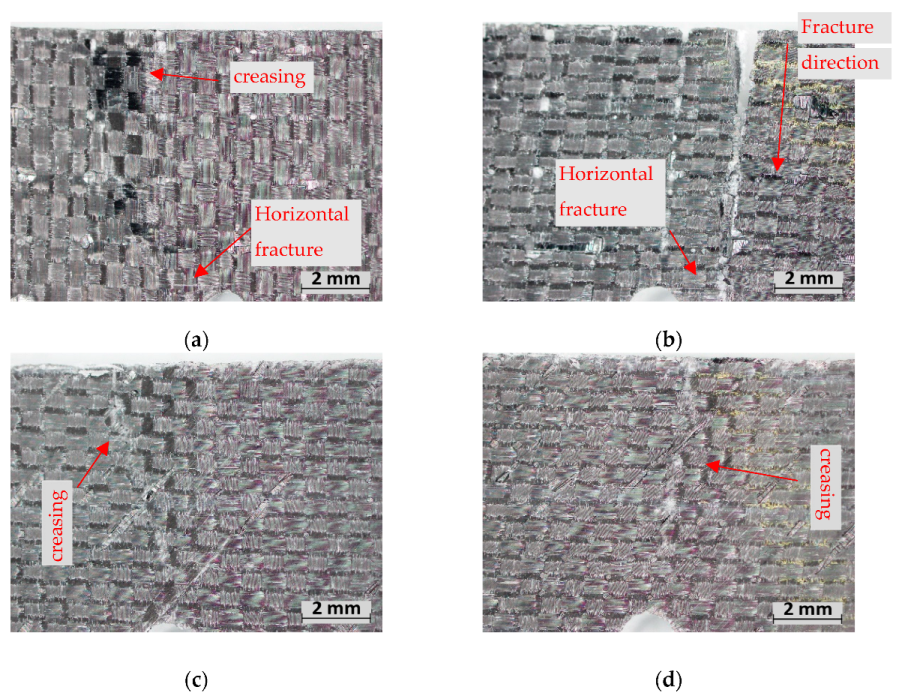

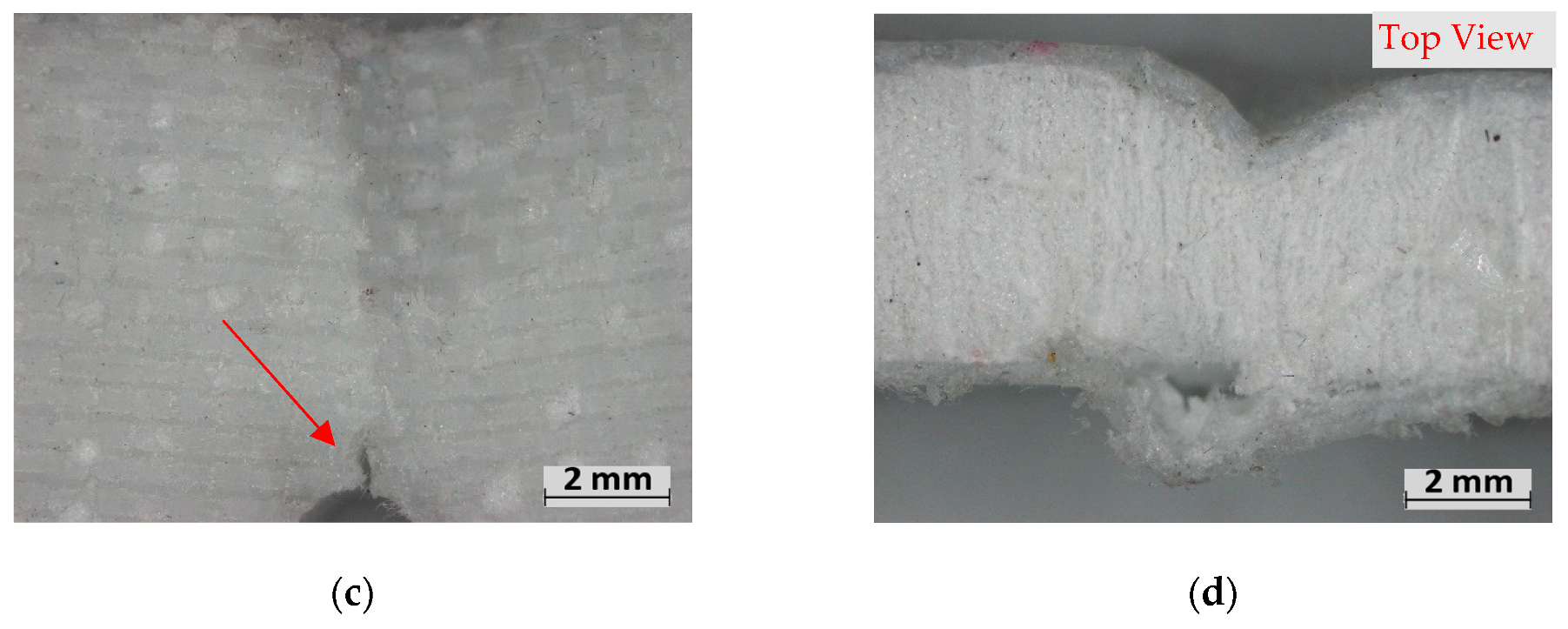
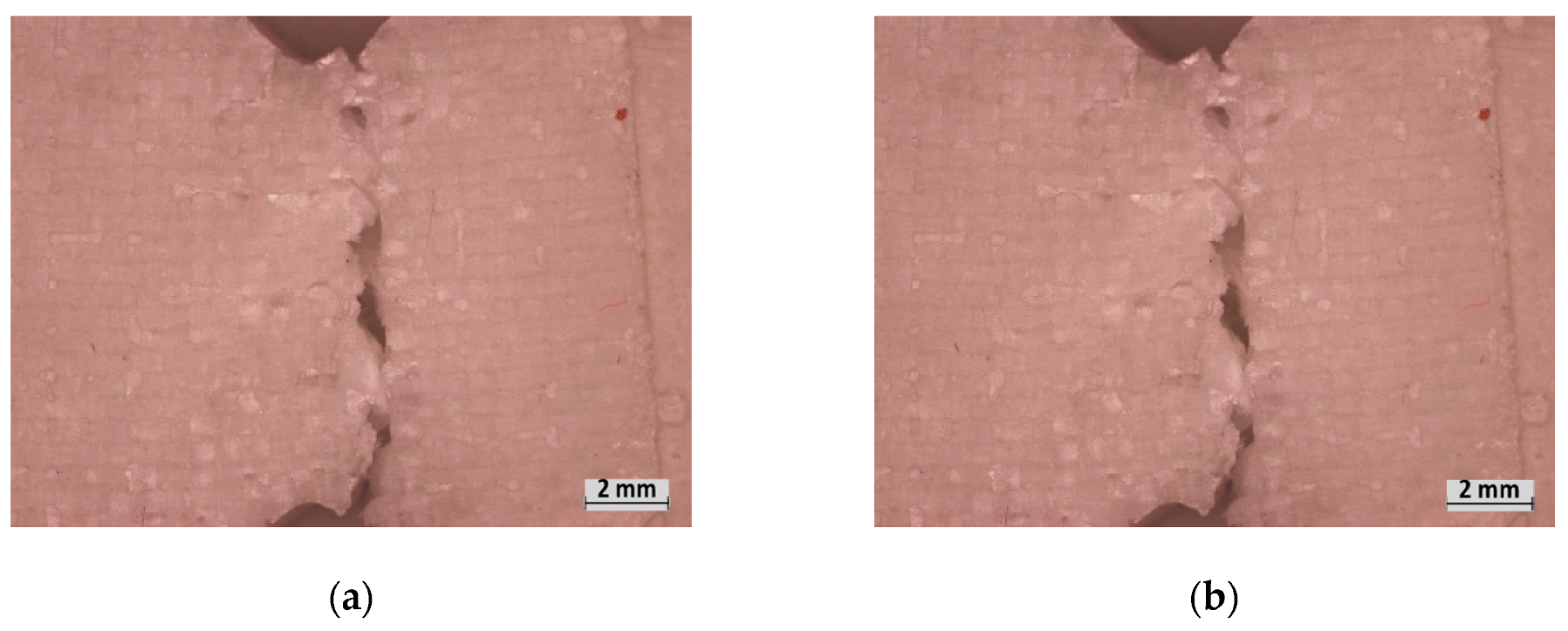
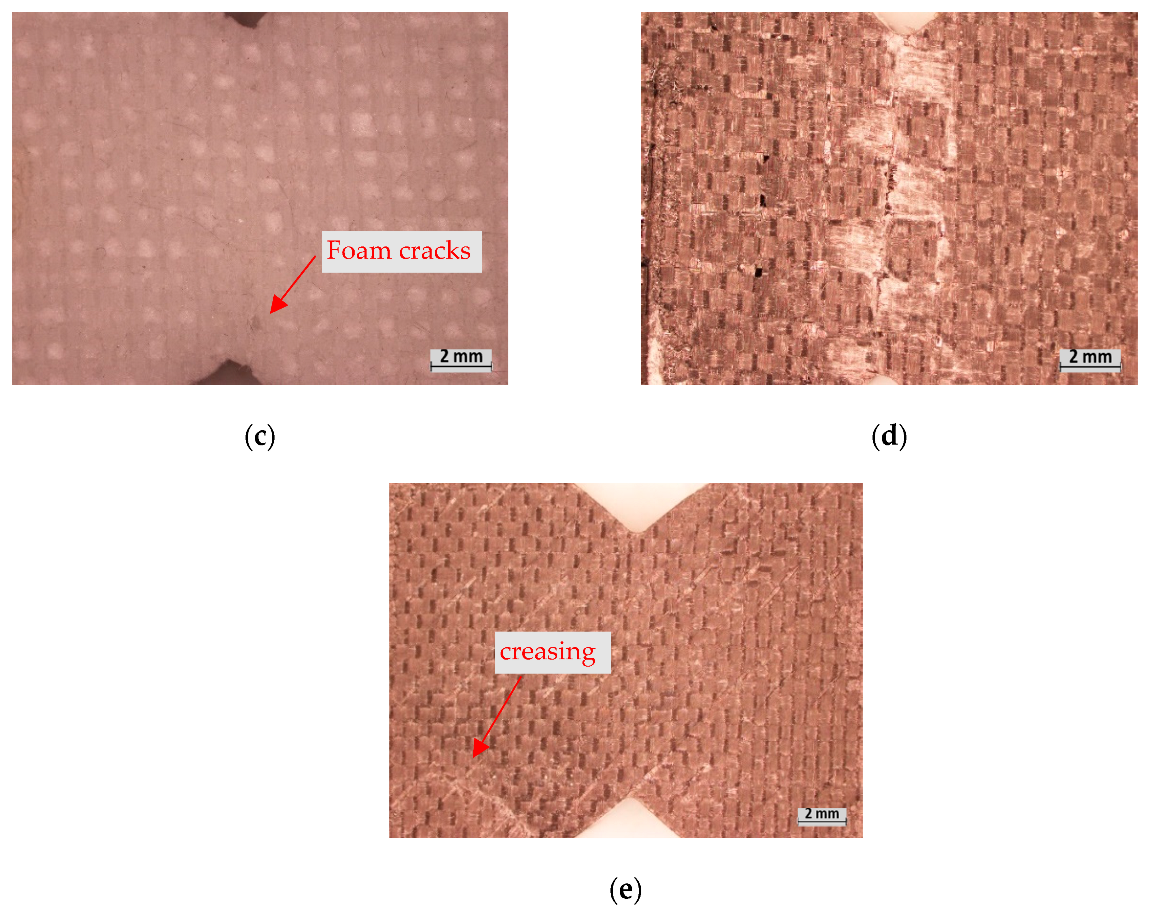
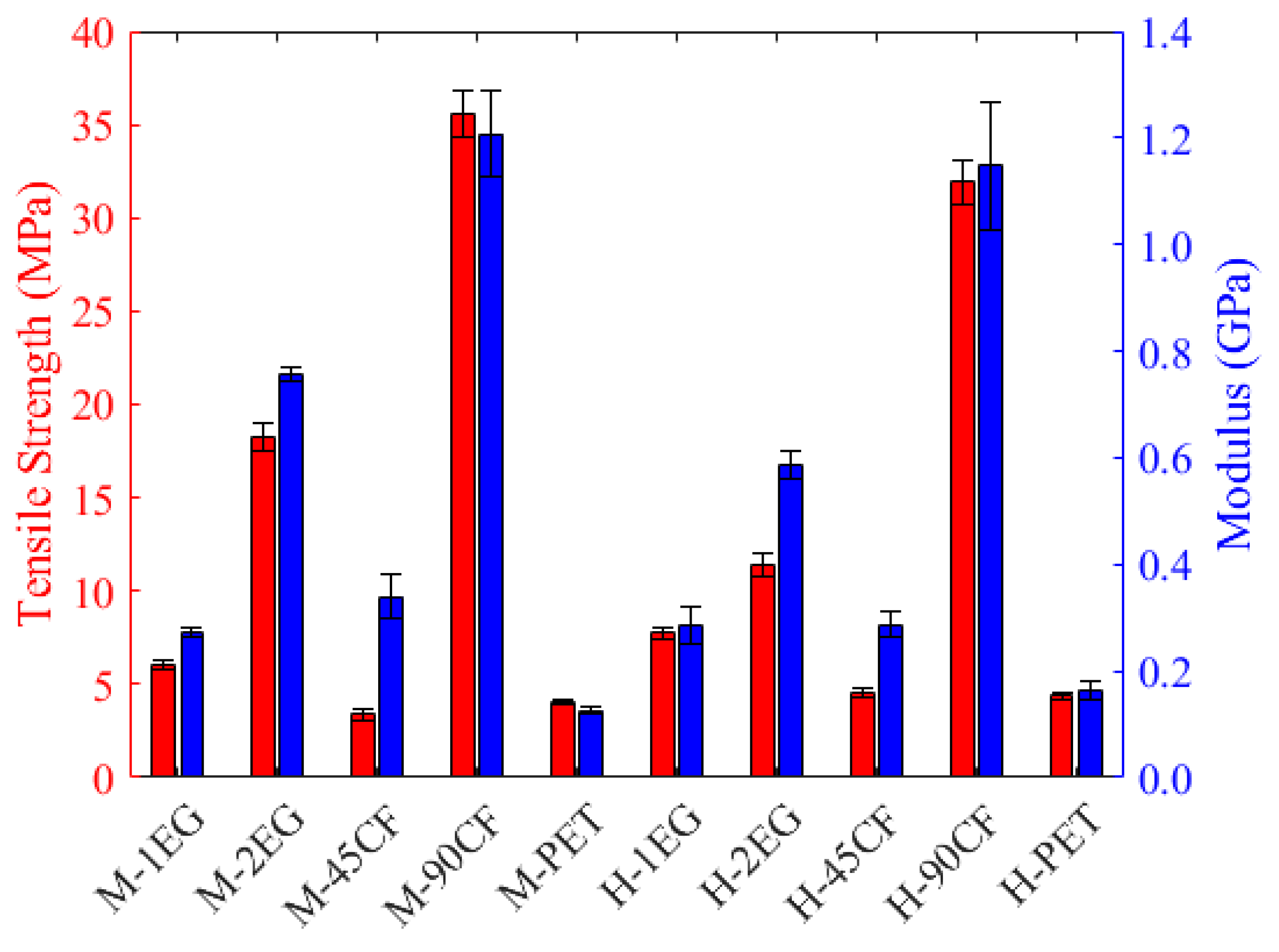
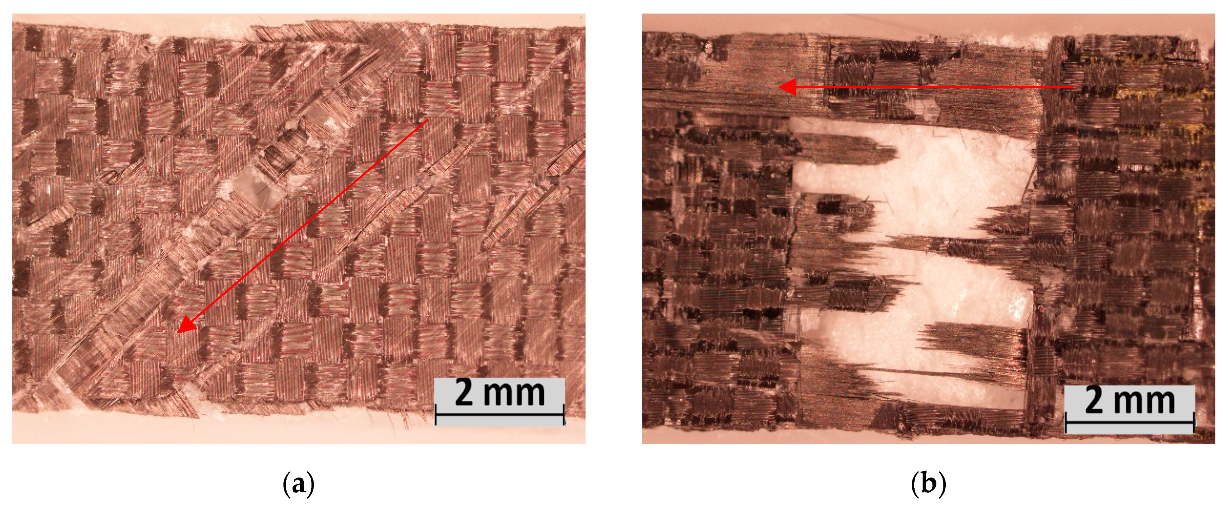
| Foam | Fabric | Fabric Area Weight | Fabric Weave | No. Skin Layer | Code | Fabric Weight Fraction (Wf) |
|---|---|---|---|---|---|---|
| High | E-Glass | 135.62 gsm (4oz) | Plain 0/90 | 1-ply | H-1EG | 0.47 |
| Medium | E-Glass | 135.62 gsm (4oz) | Plain 0/90 | 1-ply | M-1EG | 0.46 |
| High | E-Glass | 135.62 gsm (4oz) | Plain 0/90 | 2-ply | H-2EG | 0.54 |
| Medium | E-Glass | 135.62 gsm (4oz) | Plain 0/90 | 2-ply | M-2EG | 0.51 |
| High | Carbon Fibre | 200 gsm | Plain 0/90 | 1-ply | H-90CF | 0.50 |
| Medium | Carbon Fibre | 200 gsm | Plain 0/90 | 1-ply | M-90CF | 0.52 |
| High | Carbon Fibre | 200 gsm | Double-Bias +45/−45 | 1-ply | H-45CF | 0.49 |
| Medium | Carbon Fibre | 200 gsm | Double-Bias +45/−45 | 1-ply | M-45CF | 0.50 |
| High | Recycled Polyethylene Terephthalate (PET) | 101.72 gsm (3oz) | Plain 0/90 | 1-ply | H-PET | 0.26 |
| Medium | Recycled Polyethylene Terephthalate (PET) | 101.72 gsm (3oz) | Plain 0/90 | 1-ply | M-PET | 0.27 |
Disclaimer/Publisher’s Note: The statements, opinions and data contained in all publications are solely those of the individual author(s) and contributor(s) and not of MDPI and/or the editor(s). MDPI and/or the editor(s) disclaim responsibility for any injury to people or property resulting from any ideas, methods, instructions or products referred to in the content. |
© 2023 by the authors. Licensee MDPI, Basel, Switzerland. This article is an open access article distributed under the terms and conditions of the Creative Commons Attribution (CC BY) license (https://creativecommons.org/licenses/by/4.0/).
Share and Cite
Crameri, S.; Stojcevski, F.; Usma-Mansfield, C. An Experimental Investigation of the Mechanical Performance of EPS Foam Core Sandwich Composites Used in Surfboard Design. Polymers 2023, 15, 2703. https://doi.org/10.3390/polym15122703
Crameri S, Stojcevski F, Usma-Mansfield C. An Experimental Investigation of the Mechanical Performance of EPS Foam Core Sandwich Composites Used in Surfboard Design. Polymers. 2023; 15(12):2703. https://doi.org/10.3390/polym15122703
Chicago/Turabian StyleCrameri, Sam, Filip Stojcevski, and Clara Usma-Mansfield. 2023. "An Experimental Investigation of the Mechanical Performance of EPS Foam Core Sandwich Composites Used in Surfboard Design" Polymers 15, no. 12: 2703. https://doi.org/10.3390/polym15122703
APA StyleCrameri, S., Stojcevski, F., & Usma-Mansfield, C. (2023). An Experimental Investigation of the Mechanical Performance of EPS Foam Core Sandwich Composites Used in Surfboard Design. Polymers, 15(12), 2703. https://doi.org/10.3390/polym15122703





